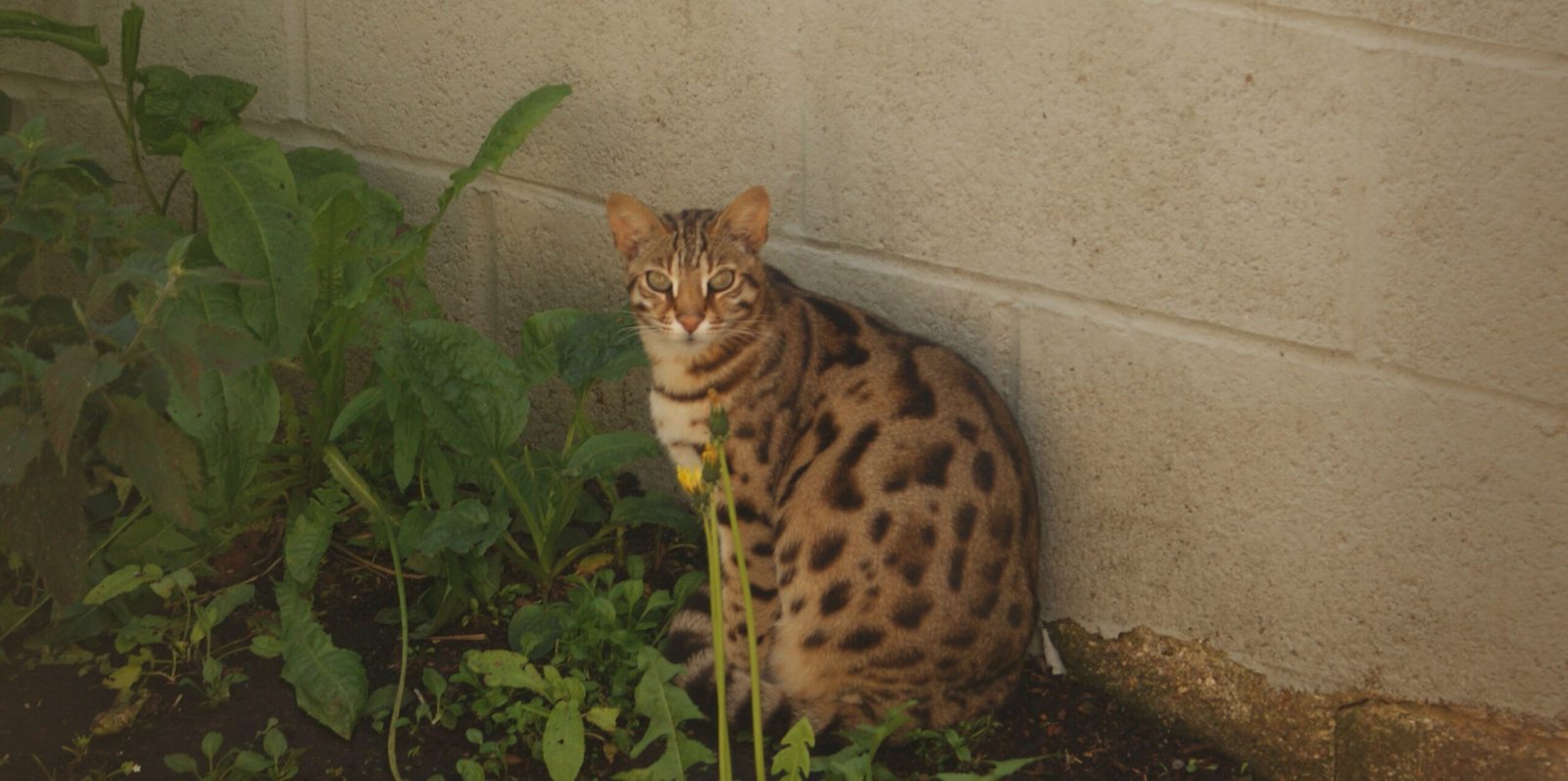It’s a gut-wrenching moment for any cat lover: you reach out for a gentle scratch behind the ears, but your usually affectionate feline simply turns away and disappears under the bed. You call their name, but all you get is silence—or, worse, a flicking tail as they vanish around the corner. If your cat suddenly seems distant or withdrawn, it can feel like you’ve been shut out from a secret world. Cats are famously mysterious, but when they retreat emotionally, it leaves us worried, confused, and wondering what’s really going on in their furry little minds. Let’s unravel what you can do to help your cat when their heart goes into hiding.
Understanding Feline Emotions

Cats have feelings just like humans, even if they don’t show them in the same ways. When a cat retreats emotionally, it could be their way of saying, “I need space” or “Something’s wrong.” Imagine if you had a rough day and just wanted to curl up alone—cats experience this, too. They might become distant if they’re scared, anxious, or simply overwhelmed. Recognizing that a cat’s emotional world is just as real and complex as ours is the first step in helping them. Sensitive creatures, cats pick up on subtle changes in their environment and in our moods. The more we understand their emotional language, the better we can support them during tough times.
Recognizing the Signs of Emotional Withdrawal

It’s not always obvious when a cat is emotionally checked out. Some signs include hiding more than usual, refusing to play, or ignoring affection. A cat that used to greet you at the door might now watch you from afar or not come out at all. You may also notice a lack of purring, tail flicking, or even a blank stare. These subtle cues can be easy to miss if you’re not paying close attention. Sometimes, a cat will stop grooming themselves or seem uninterested in treats they once loved. All these behaviors are ways your cat is telling you that something isn’t right in their world.
Common Triggers for Emotional Withdrawal

Several things can cause your cat to pull away emotionally, and often the culprit is change. Moving to a new home, introducing a new pet, or even rearranging furniture can unsettle a cat. Loud noises, unfamiliar guests, or a trip to the vet might also be triggers. Illness or pain is another big reason for sudden withdrawal—cats are experts at hiding discomfort. Sometimes, a shift in your own schedule or mood can affect them, since they are deeply attuned to the people they love. It’s important to think about what’s changed recently in their environment or routine when you notice emotional retreat.
Respecting Their Need for Space

When your cat pulls away, the temptation is to chase after them or coax them out with treats and toys. But just like people, cats need time alone to process their feelings. Forcing interaction can push them further away. Instead, let your cat choose when to come out and engage. You can make their favorite hiding spot cozy and safe, adding a soft blanket or a piece of your clothing for comfort. By respecting their boundaries, you show them that their feelings matter. This patience builds trust and helps them feel secure, even when they’re feeling low.
Creating a Safe Haven

Every cat needs a place where they can retreat without fear of being disturbed. This could be a quiet corner, a cozy box, or a perch by the window. Make sure this spot is always accessible and free from loud noises or foot traffic. Adding familiar scents, like their favorite blanket or a piece of your worn clothing, can be especially comforting. Avoid cleaning or moving their safe space when they’re using it, so they always know it’s available. Cats with a reliable sanctuary are more likely to come out on their own terms, knowing they can always return if things get overwhelming.
Approaching With Gentle Presence

You might be eager to reconnect with your cat, but sometimes the best approach is simply to be there—quiet, calm, and available. Sit near their hiding spot and talk softly, or read a book out loud so they hear your familiar voice. Avoid making eye contact, which can feel threatening to a nervous cat. Instead, offer your hand and let them come to you if they wish. Sometimes, just being nearby is enough to reassure them. Over time, your gentle presence can help coax them out of their shell, one pawstep at a time.
Monitoring for Physical Health Issues

Sometimes, emotional withdrawal is actually a sign of a health problem. Cats are notorious for hiding pain or illness, so if your feline suddenly becomes distant, it’s wise to keep an eye out for other symptoms. Watch for changes in appetite, weight loss, vomiting, or changes in litter box habits. If your cat seems lethargic or is hiding more than usual, a visit to the vet may be needed. Early intervention can make all the difference. Remember, emotional and physical health are closely linked for cats—sometimes, what seems like sadness is really a cry for medical help.
Offering Comfort Without Overwhelming

It’s natural to want to comfort your cat, but too much attention can backfire. Instead of scooping them up or petting them constantly, try offering small gestures of kindness. Place a treat near their hiding spot or speak in a calm, reassuring tone. You can also use a soft toy or a gentle brush if your cat enjoys grooming. Observe how your cat responds—if they seem stressed, back off and give them more space. Sometimes, just sitting nearby and offering quiet companionship is the best comfort you can provide.
Using Feline-Friendly Calming Aids

There are many products designed to help cats feel more at ease during stressful times. Pheromone diffusers, calming collars, and sprays can create a soothing environment. These products mimic natural feline scents that signal safety and relaxation. You might also try playing soft music or using a white noise machine to drown out startling sounds. Herbal remedies or treats with calming properties can sometimes help, but always check with your vet before introducing anything new. While no product is a magic fix, these aids can make your cat’s world feel a little safer while they heal emotionally.
Maintaining a Consistent Routine

Cats thrive on predictability. When their world feels shaky, sticking to a regular feeding, play, and sleep schedule can provide much-needed stability. Try not to make any big changes to their environment or daily routine while they’re feeling vulnerable. Even small rituals, like feeding them at the same time each day or playing with the same toy, can be incredibly reassuring. Routine is a kind of silent promise—“Life goes on, and you’re okay.” Over time, this consistency can help coax your cat back into their usual, confident self.
Encouraging Gentle Play

Play is a powerful tool for healing, but it needs to be offered gently when your cat is emotionally withdrawn. Use soft, slow-moving toys like a feather wand or a plush mouse to invite engagement without overwhelming them. Sit on the floor and let your cat watch at first—sometimes, they’ll join in when they’re ready. Don’t force play if they’re not interested; instead, let your cat set the pace. Even just watching you move a toy can spark curiosity and encourage them to re-engage with the world. Play is not only fun—it’s therapy for a worried cat.
Rebuilding Trust After a Scare

If your cat’s emotional withdrawal happened after a specific event—like a loud noise or a trip to the vet—it might take time to rebuild trust. Be patient and consistent in your interactions. Avoid repeating the trigger if possible, and let your cat know you’re a source of safety, not stress. You can offer treats or gentle praise when they approach you, but never force contact. Over time, your cat will learn that the scary event is in the past and that being with you is safe again. Trust is like a fragile bridge—repaired slowly, but it can be stronger than ever.
Communicating With Body Language

Cats speak volumes through their bodies, even when their mouths are silent. Pay close attention to the position of their ears, tail, and whiskers. A relaxed tail and forward-facing ears mean your cat is open to interaction, while a tucked tail or flattened ears signal stress. Mirror your cat’s calmness by moving slowly and avoiding sudden gestures. Sometimes, just blinking slowly at your cat can communicate safety and affection. This “cat kiss” is a silent way to say, “I’m not a threat.” Understanding and using body language helps bridge the emotional gap when words fail.
Offering High Places and Vertical Space

Cats feel safer when they can observe their surroundings from above. If your cat is retreating emotionally, providing access to high shelves, cat trees, or window perches can help them feel more in control. These elevated spots let your cat watch what’s happening without feeling vulnerable. You might notice your cat spending more time perched up high when they’re anxious—that’s normal. Over time, as they regain confidence, they may come down more often to join you. Vertical space is like giving your cat a little island of safety in a sea of uncertainty.
Being Mindful of Other Pets

If you have a multi-pet household, emotional withdrawal can sometimes be triggered by conflicts or changes in the social dynamic. Watch how your cats (or dogs) interact—sometimes, another pet’s behavior can be overwhelming. Give your withdrawn cat plenty of chances to be alone, and don’t force group play or feeding times. You can use baby gates or separate rooms to give everyone the space they need. If you notice bullying or tense standoffs, it might be time to consult a professional for advice. Harmony at home can go a long way toward helping your cat come out of their shell.
Using Treats and Positive Reinforcement

Positive reinforcement is a gentle way to encourage your cat to reconnect without pressure. Whenever your cat comes out of hiding or engages with you, offer a small, tasty treat or a gentle word of praise. This creates a positive association with your presence and helps rebuild confidence. Avoid using treats to lure your cat out before they’re ready; instead, reward them for brave behavior at their own pace. Over time, these little victories add up, helping your cat feel safe enough to trust again. Think of treats as stepping stones on the path back to connection.
Avoiding Punishment or Negative Reactions

It’s easy to feel frustrated or hurt when your cat pulls away, but negative reactions can make things worse. Never scold, chase, or punish your cat for hiding or ignoring you. These responses only reinforce their fear and make them less likely to come out. Instead, remind yourself that withdrawal is your cat’s way of coping with stress. Approach your cat with patience and empathy, knowing that healing takes time. Remember, your gentle understanding is the key to unlocking their heart again.
Involving the Whole Family

If you share your home with others, make sure everyone is on the same page about how to treat your emotionally withdrawn cat. Kids may need reminders to use quiet voices and gentle hands, while adults should agree on routines and boundaries. The more consistent your household is, the safer your cat will feel. You might even assign special roles, like one person being in charge of quiet playtime or another handling feeding. When everyone works together, your cat is surrounded by a circle of trust and comfort. Harmony at home can be the secret ingredient to helping your cat heal.
Seeking Professional Help When Needed

Sometimes, despite your best efforts, your cat remains withdrawn or their behavior worsens. This might be a sign that professional help is needed. A veterinarian can rule out medical issues, while a feline behaviorist can help address deeper emotional problems. Don’t feel embarrassed or ashamed—asking for help is a sign of love, not weakness. Professionals can offer tailored advice and strategies that you may not have considered. In some cases, medication or specialized training might be recommended. The most important thing is to never give up on your cat, even when things seem tough.
Trusting the Bond You’ve Built

At the heart of every cat-human relationship is trust. When your cat retreats emotionally, it can feel like that trust is broken, but it’s often just hidden for a while. Remember all the good moments—the purrs, the head bumps, the moments of quiet companionship. These memories are proof that your bond is real and resilient. By responding with patience, empathy, and understanding, you show your cat that you’re always there, no matter what. Sometimes, it just takes time for that trust to shine through again. After all, love is about showing up, even when things get tough.

Growing up traveling and experiencing new cultures and wonders, I have had a passion for nature, adventuring, photography, and videography. I am currently working towards a BSc in Biodiversity and Ecology at Stellenbosch University, and I hope to specialise in Marine Sciences one day.
Please send any feedback to Feedback@animalsaroundtheglobe.com






